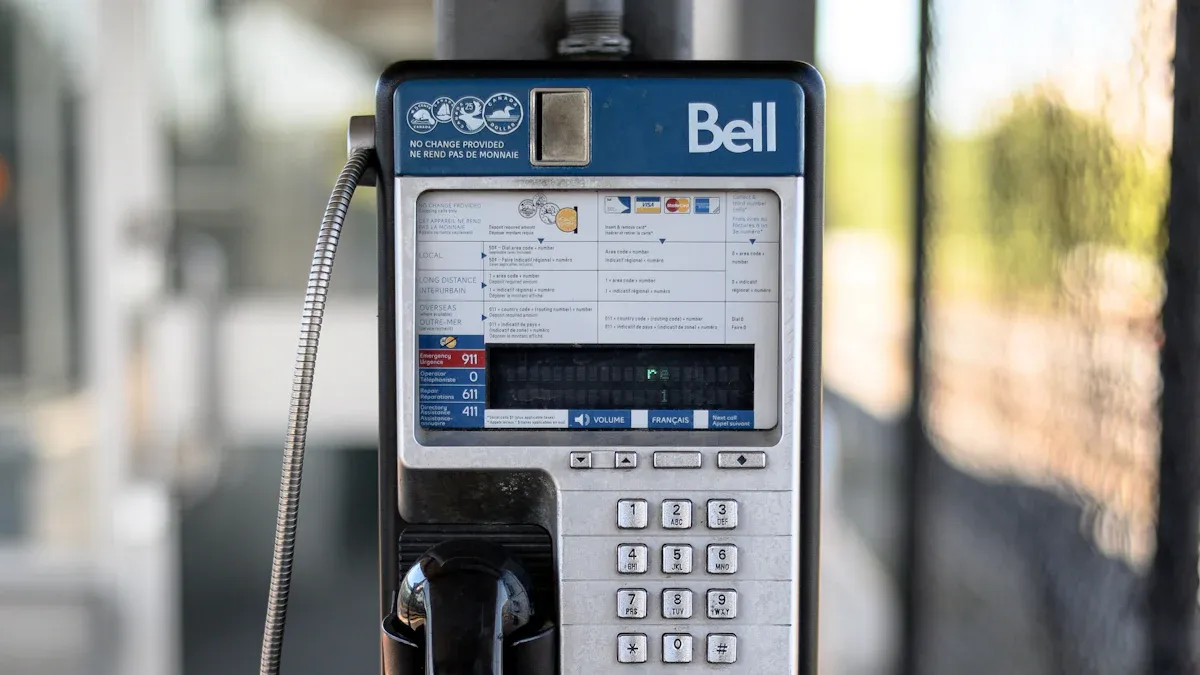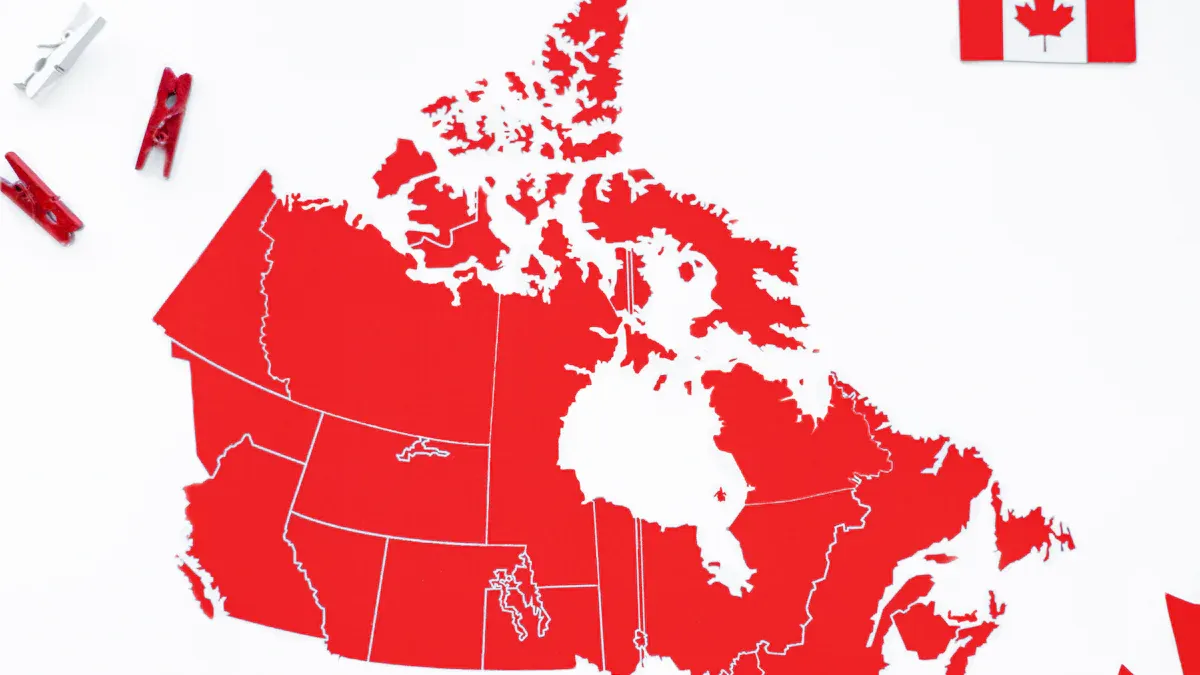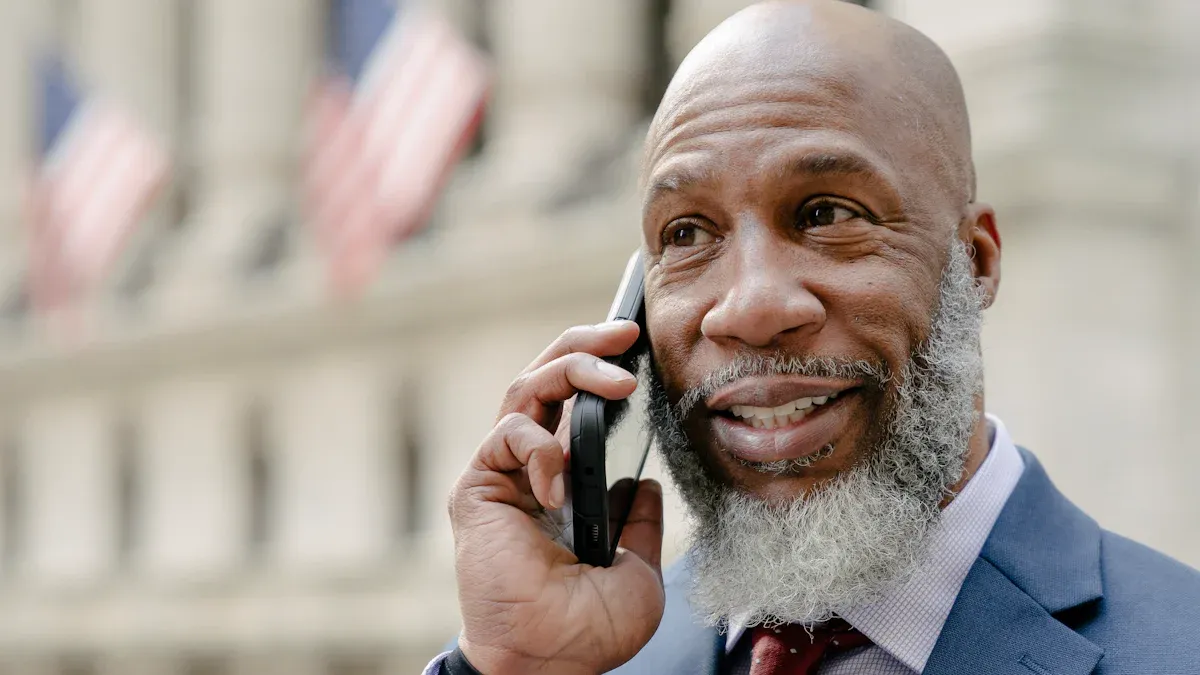- EasyCard
- Trade
- Help
- Announcement
- Academy
- SWIFT Code
- Iban Number
- Referral
- Customer Service
- Blog
- Creator
Canada Calling Code Explained and How to Make Your Call

Image Source: unsplash
You may feel unsure about how to reach someone in Canada, especially if you have never dialed internationally before. The canada country code is +1, which you must use when calling from outside Canada. Many people get confused by the process, such as forgetting to add the calling code Canada or using the wrong area code.
- The +1 code is widely recognized and makes dialing easier within North America.
- Always double-check the area code to avoid mistakes, since some U.S. area codes like 559 are often confused with Canadian numbers.
Key Takeaways
- Use the country code +1 when calling Canada from outside the country to connect your call correctly.
- Dial 1 plus the three-digit Canadian area code and the seven-digit local number when calling from the United States or other NANP countries.
- From countries outside the NANP, start with your country’s international exit code, then dial +1, the area code, and the local number.
- Always double-check the area code to avoid mistakes since Canada shares the +1 code with the United States and other regions.
- If you have trouble calling, verify the number format, check your phone plan, enable caller ID, or try using calling apps like Skype or Viber.
Calling Code Canada

Image Source: pexels
What Is the Calling Code for Canada
You need to know the calling code for Canada before you make a call from outside the country. The calling code canada is +1. This code is not unique to Canada. Instead, it is part of the North American Numbering Plan (NANP), which covers 24 countries and territories, including the United States and many Caribbean nations. The NANP uses a single country code, so both Canada and the United States share the same code: +1.
The NANP was created to make phone calls easier across North America. It uses a standard system with three-digit area codes and seven-digit local numbers. Canada fits into this system by having its own area codes, which are managed by Canadian authorities. You can see how the calling code canada works in the table below:
| Step | What to Dial | Example |
|---|---|---|
| 1 | +1 | +1 |
| 2 | Area Code | 604 |
| 3 | Local Number | 555 1234 |
Note: The plus sign (+) stands for your country’s international access code. For example, dial 011 in the United States or 00 in many European countries.
You do not need a special or different code for Canada. The calling code canada is always +1, and there are no exceptions or special cases. Every call to Canada from outside the NANP region starts with this code.
When to Use the Calling Code
You must use the calling code canada in several situations. Here are the most common times you need it:
- When you call a Canadian number from outside Canada, always start with the canada country code (+1).
- If you are in the United States or another NANP country, you can dial 1 + area code + local number directly. You do not need to dial an international prefix like 011.
- When you send a text message to a Canadian number from another country, include the calling code canada at the beginning.
- If you use a landline in a country outside the NANP, dial your country’s international access code (such as 00 or 011), then the calling code canada, then the area code and local number.
- You do not need to use the calling code canada when calling within Canada. Just use the area code and local number.
Tip: Always check the area code before you dial. Canada shares the calling code canada with the United States and other NANP countries, so the area code tells the network which region to connect your call to.
The process for calling Canada is simple compared to calling countries outside the NANP. You use the same format for all NANP countries, which makes dialing less confusing. The calling code canada helps your call reach the right country, but the area code is what directs it to the correct city or province.
How to Call Canada

Image Source: pexels
From the United States
If you want to know how to call Canada from the United States, you will find the process simple. Both countries use the North American Numbering Plan. You do not need to dial an international exit code. You only need to follow a few steps. Here are the dialing instructions:
- Dial the number 1. This is the country code for Canada.
- Enter the three-digit Canadian area code. Make sure you have the correct area code for the city or region.
- Dial the seven-digit local phone number.
For example, if you want to call a number in Toronto with the area code 416, you would dial:
1 416 555 1234
You use the same steps for calling Canadian mobile numbers. Always start with 1, then the area code, and then the local number. You do not need to add any extra codes or prefixes. This method works for both landlines and cell phones.
Tip: Double-check the area code before you call. Some area codes in the United States look similar to Canadian ones.
From Other Countries
If you are outside the United States or another NANP country, you need to follow international calling steps. The process for how to call to Canada from other countries includes an extra step at the beginning. You must dial your country’s international exit code first. Here are the dialing instructions:
- Dial your country’s international exit code. This code lets your call leave your country’s phone system. For example, the exit code is 00 in the United Kingdom and Australia, and 011 in the United States.
- Enter the country code for Canada, which is 1.
- Add the three-digit Canadian area code.
- Dial the seven-digit local number.
Here is a table that shows how international calling procedures differ among several countries:
| Country | Exit Code | Example Dialing Format |
|---|---|---|
| United States | 011 | 1 + area code + local number |
| United Kingdom | 00 | 00 1 + area code + local number |
| Australia | 0011 | 0011 1 + area code + local number |
| India | 00 | 00 1 + area code + local number |
For example, if you are calling from the United Kingdom to a number in Vancouver (area code 604), you would dial:
00 1 604 555 1234
If you are calling from Australia, you would dial:
0011 1 604 555 1234
Note: Always check your country’s exit code before you start. The exit code is different in each country.
International calling can seem confusing, but if you follow these steps, you will reach your contact in Canada. The area code and local number always have the same length. This makes it easier to remember the format. If you want to learn more about how to call Canada, keep these dialing instructions handy.
Calling Canada from any country becomes easy once you know the right steps. Whether you are in the United States or another country, you only need to follow the correct sequence. This guide on how to call Canada helps you avoid mistakes and connect your call quickly.
Canadian Number Format
Canadian phone numbers follow a clear structure that helps you identify the region and type of number. You will see this structure in every canada phone number format. The standard format uses a three-digit area code followed by a seven-digit local number. This system makes it easy to recognize and dial numbers across the country.
Area Codes in Canada
You will find that area codes in Canada always have three digits. Each area code points to a specific province, city, or region. The canada phone number format uses area codes that start with digits from 2 to 9. Larger cities often have their own area codes, while smaller towns may share one. When a region runs out of numbers, new area codes are added as overlays. For example, Alberta now has five area codes, including 368, which overlays 780 and 403. This approach helps meet the growing demand for new numbers.
Here is a table showing some common area codes and the regions they serve:
| Area Code(s) | Province/City Represented |
|---|---|
| 204, 431, 584 | Manitoba |
| 250, 604, 778 | British Columbia |
| 403, 587, 825, 368 | Alberta |
| 416, 647, 437, 942 | Ontario (Toronto) |
| 514, 438, 263 | Quebec (Montreal) |
| 709, 879 | Newfoundland and Labrador |
| 867 | Northern Territories |
| 902, 782 | Nova Scotia and Prince Edward Island |
| 613, 343, 753 | Ontario (Ottawa) |
Note: A new area code, 257, will be added in British Columbia in 2025. This will overlay existing area codes and provide more phone numbers for the region.
Example Phone Numbers
You can spot the canada phone number format by its layout. The format looks like this: +1 (area code) XXX-XXXX. The country code +1 comes first, then the three-digit area code, and finally the seven-digit local number. The local number splits into a three-digit central office code and a four-digit line number.
Here are some examples of the canada phone number format:
| Type of Number | Sample Number | Description |
|---|---|---|
| Local Number | 1 416 555 6789 | Toronto local number |
| Mobile Number | 1 647 555 3456 | Toronto mobile number |
| Toll-Free Number | 1 800 555 1234 | Toll-free business number |
| Vanity Number | 1 888-CALL-NOW | Easy-to-remember business number |
| Emergency Number | 911 | Emergency services |
You will use the canada phone number format for all calls, whether you are dialing locally or from another country. Always check the area code and follow the correct sequence to make sure your call connects.
Troubleshooting Calls to Canada
Common Dialing Issues
You may run into several problems when trying to call Canada. Many people find that dialing toll-free numbers from outside Canada does not work as expected. Toll-free numbers, such as those starting with 800 or 888, often do not connect if you call from another country. Some businesses block calls from numbers that are not registered in Canada or do not have caller ID enabled. If you try to call a Canadian toll-free number from abroad, you might need to change the prefix. For example, you may need to replace 800 with 880 and then add the country code.
Here are some common issues you might face:
- Toll-free numbers are not always free when you call from outside Canada. You may get charged international rates.
- Some businesses block calls from outside Canada or from phones without caller ID.
- Your carrier or phone plan may limit the number or length of toll-free calls.
- Dialing the wrong prefix or area code can cause your call to fail.
- If you use an American cell phone and dial the correct format, your call may go through, but you will still pay for it.
Tip: Wi-Fi calling and apps like Skype or Viber can help you reach Canadian numbers, including toll-free lines, even if your regular call does not connect.
Connection Problems
Sometimes, your call to Canada may not go through even if you dial the number correctly. This can happen for several reasons. Your phone carrier may block certain types of calls, or the network may have temporary issues. If you hear a busy signal or a recorded message, check the number and try again. Make sure you have entered the correct country code, area code, and local number.
You can try these steps to solve connection problems:
- Double-check the number format and area code.
- Make sure your phone plan allows international calls.
- Enable caller ID on your phone, as some businesses block calls without it.
- Try using a different phone or a third-party app for calling.
- Contact your carrier if you still cannot connect.
Note: If you keep having trouble, ask the person you are calling if their number has any restrictions or if they can suggest another way to reach them.
You should also check calling rates to canada before making your call, especially if you plan to call toll-free numbers or use international calling services. This helps you avoid unexpected charges and ensures your call goes through smoothly.
To call Canada successfully, you need to follow a few important steps:
- Check that the phone number uses the correct Canadian format with the +1 country code.
- Double-check the area code and dialing sequence before you place your call.
- Use a reliable provider to ensure good call quality.
- If you have trouble, try restarting your device, checking your internet, or contacting your service provider.
Remember, calling Canada is simple when you use the right code and format. Taking a moment to verify details helps you connect without issues.
FAQ
What is the correct way to dial a Canadian number from the United States?
You dial 1, then the three-digit Canadian area code, and then the seven-digit local number. For example:
1 604 555 1234
Do I need to pay extra fees when calling Canada from another country?
Yes, you may pay international calling fees. Check your phone plan for rates. Some providers charge by the minute. You can compare rates in USD using online exchange rate tools.
Why does my call to a Canadian toll-free number not connect?
Many Canadian toll-free numbers do not work from outside Canada. Some businesses block international calls. Try using an internet calling app if you cannot connect.
How can I find the right area code for a Canadian city?
You can search online for Canadian area codes. Many websites list area codes by city or province. For example, Toronto uses 416, 647, and 437.
Knowing the Canada calling code (+1) makes it easy to reach someone, but staying connected often goes beyond just a phone call. If you also need to send or receive money across borders, traditional banks and carriers can add high fees and delays. That’s where BiyaPay comes in.
With BiyaPay, you get fast, low-cost international transfers, transparent real-time exchange rates, and fees starting from just 0.5%. The platform supports same-day settlement in most countries and regions worldwide, giving you a smooth way to manage payments after your call.
Try BiyaPay today and keep both your conversations and transactions simple, secure, and affordable.
*This article is provided for general information purposes and does not constitute legal, tax or other professional advice from BiyaPay or its subsidiaries and its affiliates, and it is not intended as a substitute for obtaining advice from a financial advisor or any other professional.
We make no representations, warranties or warranties, express or implied, as to the accuracy, completeness or timeliness of the contents of this publication.




Contact Us
Company and Team
BiyaPay Products
Customer Services
is a broker-dealer registered with the U.S. Securities and Exchange Commission (SEC) (No.: 802-127417), member of the Financial Industry Regulatory Authority (FINRA) (CRD: 325027), member of the Securities Investor Protection Corporation (SIPC), and regulated by FINRA and SEC.
registered with the US Financial Crimes Enforcement Network (FinCEN), as a Money Services Business (MSB), registration number: 31000218637349, and regulated by FinCEN.
registered as Financial Service Provider (FSP number: FSP1007221) in New Zealand, and is a member of the Financial Dispute Resolution Scheme, a New Zealand independent dispute resolution service provider.




















